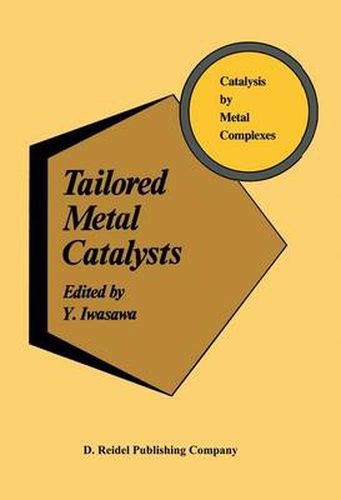Readings Newsletter
Become a Readings Member to make your shopping experience even easier.
Sign in or sign up for free!
You’re not far away from qualifying for FREE standard shipping within Australia
You’ve qualified for FREE standard shipping within Australia
The cart is loading…






This title is printed to order. This book may have been self-published. If so, we cannot guarantee the quality of the content. In the main most books will have gone through the editing process however some may not. We therefore suggest that you be aware of this before ordering this book. If in doubt check either the author or publisher’s details as we are unable to accept any returns unless they are faulty. Please contact us if you have any questions.
Well tailored metal catalysts are catalysts of the new generation resulting from scientific development at the boundary between homogeneous and hetero- geneous chemistry. The main factors involved in making tailored metal catalysts are not those of traditional impregnation in which the chemistry is in general unknown and ill-defined, or of simple ion exchange which involves long-range forces with little control on the local structure through definite and special bond direction. Tailored Metal Catalysts thus has a rather different emphasis from normal review publications in the field of catalysis. Here we concentrate more on the distinct surface chemistry and catalytic properties of important established materials with well-characterized active structures or precursors, although at the same time providing a systematic presentation of relevant data. Many pioneering works have been undertaken in the field of tailored metal catalysts since the early research on polymer-attached homogeneous metal complexes by the British Petroleum Company Ltd. and the Mobil Oil Corpora- tion around 1969; transition metal complexes attached on polymers by Grubbs (1971), Heinemann (1971), Manassen (1971), Pittman (1971), Bursian et al. (1972), Kagan (1973), Bailar (1974); transition metal complexes attached on inorganic oxides by Allum et al. (1972), Ballard (1973), Candlin and Thomas (1974), Murrell (1974), Yermakov (1974); metal carbonyls/polymers by Moffat (1970); metal carbonyls/inorganic oxides by Parkyns (1965), Davie et al. (1969), Banks et al. (1969), Howe (1973), Burwell (1975); metal carbonyl clusters/ polymers by Colhnan (1972); metal carbonyl clusters/inorganic oxides by Robertson and Webb (1974), Anderson (1974), Smith et al. (1975).
$9.00 standard shipping within Australia
FREE standard shipping within Australia for orders over $100.00
Express & International shipping calculated at checkout
This title is printed to order. This book may have been self-published. If so, we cannot guarantee the quality of the content. In the main most books will have gone through the editing process however some may not. We therefore suggest that you be aware of this before ordering this book. If in doubt check either the author or publisher’s details as we are unable to accept any returns unless they are faulty. Please contact us if you have any questions.
Well tailored metal catalysts are catalysts of the new generation resulting from scientific development at the boundary between homogeneous and hetero- geneous chemistry. The main factors involved in making tailored metal catalysts are not those of traditional impregnation in which the chemistry is in general unknown and ill-defined, or of simple ion exchange which involves long-range forces with little control on the local structure through definite and special bond direction. Tailored Metal Catalysts thus has a rather different emphasis from normal review publications in the field of catalysis. Here we concentrate more on the distinct surface chemistry and catalytic properties of important established materials with well-characterized active structures or precursors, although at the same time providing a systematic presentation of relevant data. Many pioneering works have been undertaken in the field of tailored metal catalysts since the early research on polymer-attached homogeneous metal complexes by the British Petroleum Company Ltd. and the Mobil Oil Corpora- tion around 1969; transition metal complexes attached on polymers by Grubbs (1971), Heinemann (1971), Manassen (1971), Pittman (1971), Bursian et al. (1972), Kagan (1973), Bailar (1974); transition metal complexes attached on inorganic oxides by Allum et al. (1972), Ballard (1973), Candlin and Thomas (1974), Murrell (1974), Yermakov (1974); metal carbonyls/polymers by Moffat (1970); metal carbonyls/inorganic oxides by Parkyns (1965), Davie et al. (1969), Banks et al. (1969), Howe (1973), Burwell (1975); metal carbonyl clusters/ polymers by Colhnan (1972); metal carbonyl clusters/inorganic oxides by Robertson and Webb (1974), Anderson (1974), Smith et al. (1975).